2014
Summer Institute Cologne 2014
The Invisible
While [sic!] 2013 looked into questions and theories about "Techniques of Imagination", 2014’s program investigates "The Invisible". The ambiguity of this topic – seemingly an anathema for Media and Cultural Studies – turns our attention to important questions of methodological approaches to what cannot be seen (anymore) but was/is there nevertheless. "The Invisible" also turns our attention to phenomena that transcend our perceptual order. How are these phenomena always connected to medial and artistic strategies? What methodological approaches are used to work with them? The framing questions – how can "The Invisible" be shown, performed, depicted, enacted, researched? – guarantee stimulating dialogue between all disciplines at [sic!] 2014. The perspectives on "The Invisible" can be rooted in theatre, media and art history, film studies, archaeology, digital media, video games, cultural history, performance practice, and many more traditions.
[Seminars]
Seminar I [Art History]
Stefan Grohé (University of Cologne)
Art makes visible. The origins of painting, in the West, are traced to the preservation of the likeness of the dead and the absent: art makes the absent present. Western Christian art bore the responsibility of providing a material substitute for the unseen God and for rendering visible concepts and notions. From early modern times on this legacy enabled art to act as the prime medium for rendering that which cannot be seen, e.g. imaginative fantasies, concepts, or the observations of modern science. Techniques had to be conceived to show dreams, ghosts, and angels as well as sounds, atmospheric phenomena, and rays. The course will address this fundamental paradox: it will offer students a focused introduction to the literature on one of the most fundamental thematics in the history of (Western) art, emphasizing how art conceals and reveals simultaneously; its relation to seeing and knowing; and the dialectics of presence and absence. Examples will be taken from medieval, early modern and modern art. The aim is to discuss the possibility an iconography of the invisible.
Seminar II [Theatre Studies]
Tracy C. Davis (Northwestern University), Peter W. Marx (University of Cologne)
Is it there? Yet? Again? Still? The invisible challenges our sense of perceptual order – it marks an uncertainty that goes beyond semiotic questions of representation and mere physical sight: is there more than we can see? And if so, how do we know? And can we share this insight?
While Brecht’s Galileo tries to persuade the cardinals to just 'look' (through the telescope) and discover the truth lying open in front of their eyes, Hamlet assures Horatio that there are more things in heaven and earth "Than are dreamt of in your philosophy". For Galileo scientific truth is as visible as the Ghost is to Hamlet. The visible and the invisible are contingent categories depending on cultural and epistemological frameworks. Through representation, we can understand the invisible as a cultural category that transcends optics and literal sight. The invisible registers in various forms of art and media, taking many shapes and forms, challenging the semiotic order and categories of experience. Beyond offering experiences of the invisible, art and media create intellectual reflections of the invisible and thus develop theory about it.
Theatre is granted unique license to render visible what is otherwise invisible. At the same time, theatre reflects contingent orders of visibility, the senses, and truth-telling predominant in each culture and in relation to specific artistic and historic frames. What are these differences? We will explore perspectives on the history of invisibility, its relation to theatre in various contexts, and the challenges and potential of a historiography of the invisible.
Seminar III [Media Studies]
Jacob Smith (Northwestern University), Brigitte Weingart (University of Cologne)
Media technologies have often prompted the desire to gain access to a realm of sensory experience that exists beyond the immediately visible world. In this seminar, we will investigate questions of media and "The Invisible" along two complementary lines of inquiry. The first is concerned with the ways in which optical media have been used to visualize the formerly unseen in the material world, or to picture the invisible presence of occult (‘hidden, clandestine’) forces, ranging from cosmic effluvia to demons and ghosts. The dialectics of visibility and invisibility that emerge from our genealogical analysis of pre-modern visual practices informs our discussion of techniques in contemporary cinema and 'imagineering.' Just as optical media technologies have been mobilized to expand the boundaries of the visible, modern technologies of sound have facilitated an auditory media culture that is adjacent to, but different from visual culture. A second line of inquiry in the course will thus engage with the scholarship of Sound Studies and the history of sound media in order to think about how "The Invisible" can also be understood to mean "The Audible." Topics discussed in this class include the place of media in the history of the senses, Renaissance spiritual magic, occult discourses surrounding mediated voices, ghost photography, microscopy and microcinematography, natural radio, the sonification of data, and the invisible as narrative device in film and radio.
At [sic!] 2014, in addition to the seminars, we started our Academic Workshops which were led by Michael Bachmann & Ric Knowles, Peter Scheinpflug & William N. West, Benjamin Beil & Thomas Hensel.
[sic!] 2014 was kindly supported by
